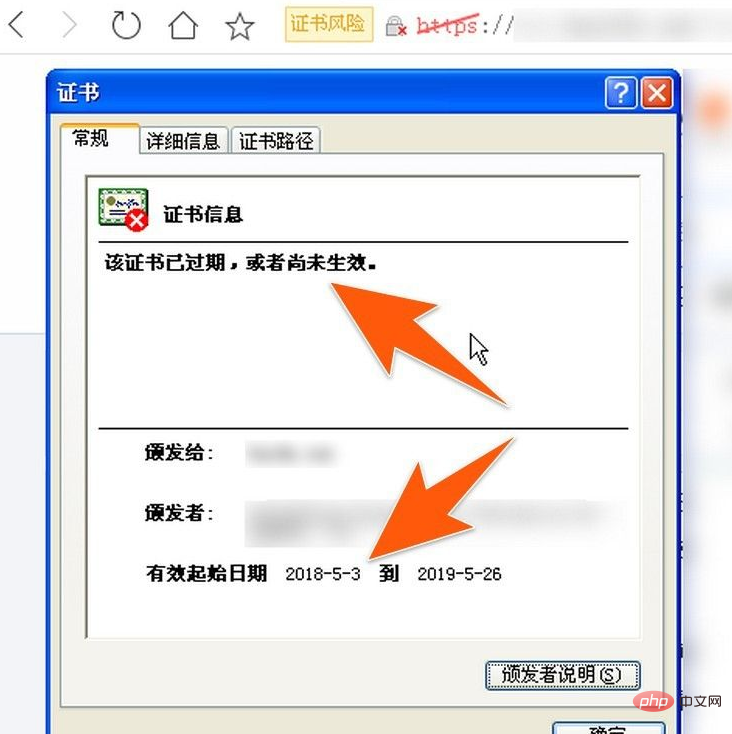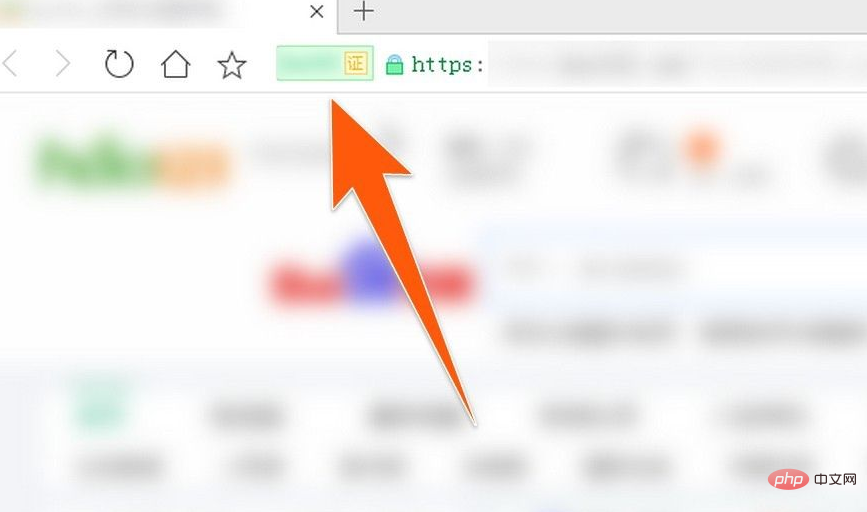
Solution: Click the small lock with a red cross in the address bar of the browser; in the pop-up window, you can see that the website has not been authenticated and the certificate is not valid, and then click "Certificate" "Information" to view the certificate's validity start and end dates; then change the computer's local time to the certificate's validity start time.

The operating environment of this tutorial: Windows 7 system, 360 Secure Browser version 12, Dell G3 computer.
Solution to web certificate risk:
For example, in the picture below, it is obviously a normal website that is opened, but at this time, at the top of the browser, A certificate risk warning appeared, and there was a red cross on the lock next to it, and a red slash line appeared on https.
At this time, you can click on the lock icon. On the pop-up window, you can see the words that the website has not been authenticated and the certificate is not valid. Then Click on the certificate information.
#In the opened certificate information, you can further see the prompt that the certificate has expired, and then you can see the validity start and end dates of the certificate below.

After seeing the validity start and end dates of the certificate above, you can double-click the time in the lower right corner of the computer desktop, and in the date and time window that opens, check whether the time and date are Correct, whether it is within the validity period.

If it is wrong, change it here. When the year, month and day are correct, click the Apply and OK buttons.
Then, close the browser first, and then reopen the webpage just now. At this time, you will find that the original certificate risk word has turned into a green The background certificate, lock icon and https are also displayed normally.

#Click the lock icon above and you will see the text prompt that the identity of the website has been verified. In this way, the certificate risk prompted on the web page is removed.
To read more related articles, please visitPHP Chinese website! !
The above is the detailed content of How to solve web certificate risks. For more information, please follow other related articles on the PHP Chinese website!
 Advantages of downloading the official website of Yiou Exchange App
Advantages of downloading the official website of Yiou Exchange App How to set header and footer in Word
How to set header and footer in Word What to do if the sound card driver installation fails
What to do if the sound card driver installation fails The difference between rest api and api
The difference between rest api and api centos
centos How to use the mid function
How to use the mid function Introduction to the plug-ins required for vscode to run java
Introduction to the plug-ins required for vscode to run java Introduction to the function of converting uppercase to lowercase in Python
Introduction to the function of converting uppercase to lowercase in Python